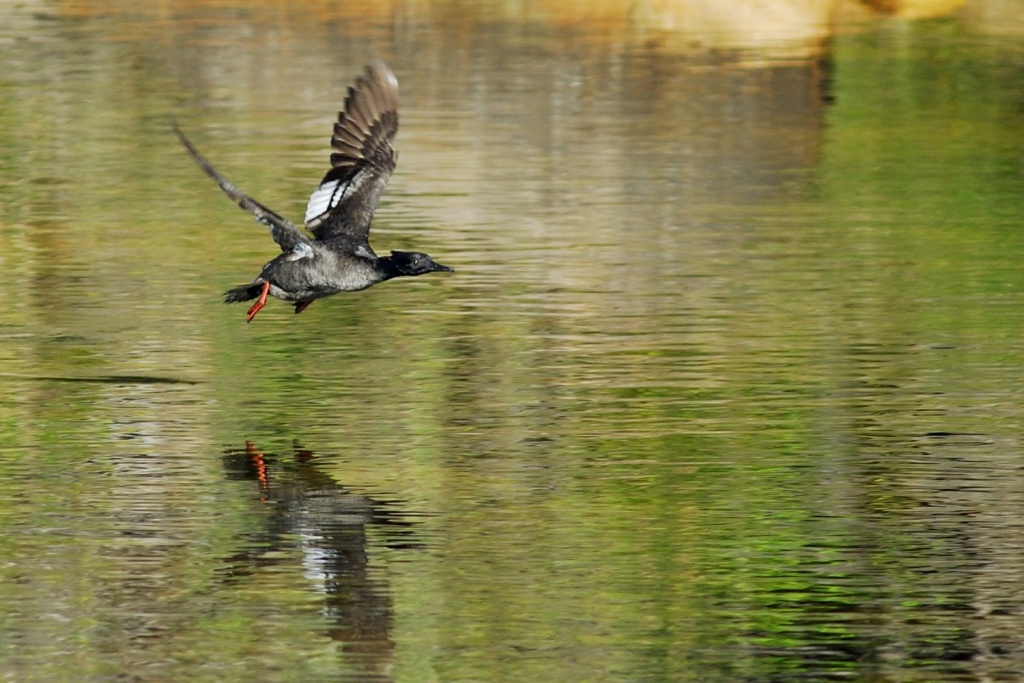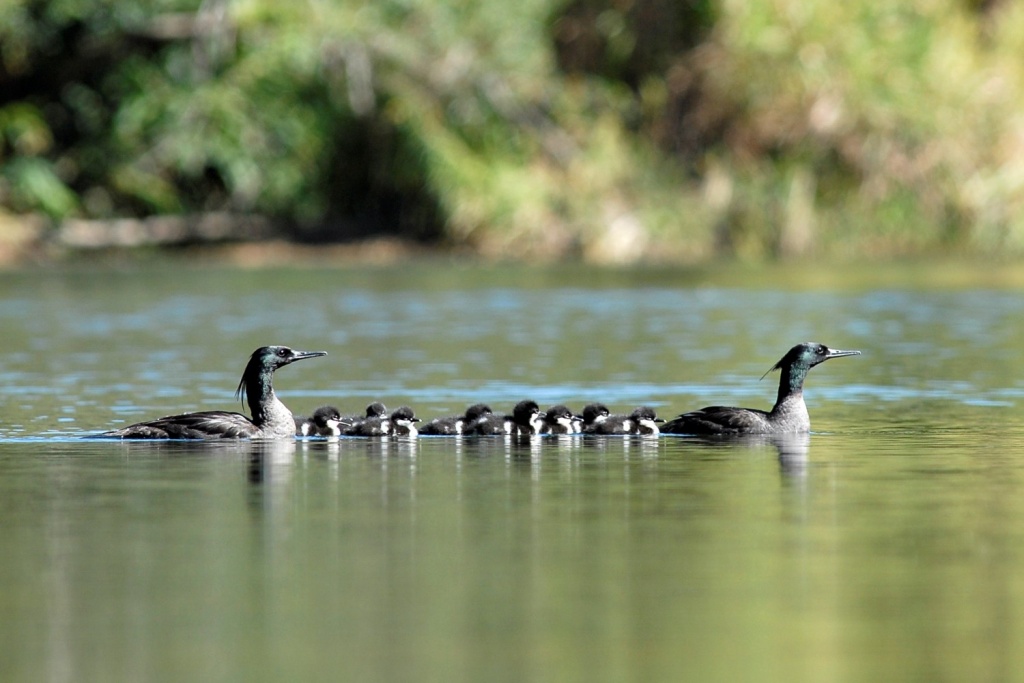If it looks like a duck, swims like a duck and quacks like a dog…
11/16/2018
If it looks like a duck, swims like a duck and quacks like a dog, then it is probably a Brazilian merganser.
As we near the end of Year of the Bird, we dedicate November to one of the rarest and most threatened species in the Neotropical (South American) region. Sporting a black coat and green crest, the Brazilian merganser is one of six most threatened waterfowl in the world, with fewer than 250 birds thought to remain. Though it belongs to the typical merganser genus, this unusual bird is no average duck…
The Brazilian merganser (Mergus octosetaceus) is distributed throughout Brazil, Paraguay and Argentina, with the most recent recordings coming from Brazil. It lives in low densities in remote and mountainous regions where it inhabits clean streams and rivers with riparian vegetation and rapids. It is considered to be one of the few Brazilian birds adapted to mountainous regions, and recognized as a resident species that does not abandon the area where it established its territory.
 Brazilian merganser distribution.
Brazilian merganser distribution.
The species spends the day foraging and resting on rocks or branches. In any sign of danger, the duck immediately goes into the water. Both young and adult mergansers are proficient swimmers and can easily pass through strong rapids. They feed primarily on small fish they capture during dives.
The Brazilian merganser is monogamous, with the same pair living together for a long time, if not throughout their lives. Like other mergansers, it is a tree-nesting species; However, both parents care for their young which is unusual behavior for ducks. The family tends to stay together for six to ten months.


 After the ducklings hatch, the parents constantly keep the young between them.
After the ducklings hatch, the parents constantly keep the young between them.
Photography: Adriano Gambarini, Terra Brasilis image bank.
Though the species is generally silent, families – in particular, adult pairs – call to communicate with one another. Unlike a typical duck’s quack, common calls sound just like a dog’s bark.
Listed as critically endangered, the Brazilian merganser’s habitat is fast dwindling. These rare birds are sensitive to habitat degradation and loss primarily due to human actions. The species has suffered from pollution, siltation and disturbance of its rivers, which has resulted largely from agricultural expansion, cattle ranching, logging, human habitation, construction and mining. Dam-building has also flooded habitat, especially in Brazil and Paraguay.
With fewer than 250 individuals remaining in the wild, extinction may be imminent. In partnership with Terra Brasilia Institute, Nature and Culture International is urgently working towards protecting the São Francisco River Basin in southeastern Brazil, one of the merganser’s principal habitats. We have recently established an agreement with the state government of Minas Gerais to create an 11,120-acre wildlife sanctuary for the Brazilian merganser. This sanctuary will represent 20% of all remaining habitat for this rare duck. Stay tuned for progress!
Build a better world for all birds by supporting Nature and Culture. Make 2X the impact through December 31!
Did you miss our last featured bird? Learn about the chaco eagle here.


